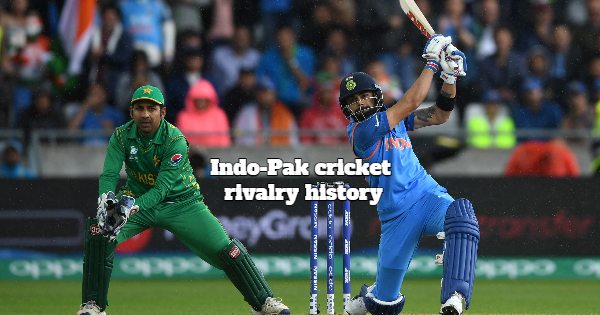In October 1952, a mere five years following the Indian subcontinent’s liberation from British colonial rule, a nascent Pakistan cricket team made its inaugural visit to the newly established Republic of India. This event marked the beginning of what would evolve into one of the most intense and celebrated rivalries in international cricket. The matches between India and Pakistan at Crickex are not just a display of sporting prowess and an event for betting.
It’s a reflection of the deep-seated historical, political, and cultural narratives that have intertwined the fates of these two nations since their independence in 1947. This exploration delves into the heart of this rivalry, uncovering the layers that make it a compelling saga of competition, unity, and passion on the cricket field.

A Historical Background
The India-Pakistan cricket rivalry, a byproduct of the partition drama, has become the subcontinent’s favorite soap opera, with cricket as its main plot. From its debut match in 1952, symbolizing the “we’re two different countries now” moment, to the dramatic pauses during the 1965 & 1971 wars showing that even cricket can’t escape politics.
Javed Miandad became an instant cricket villain after his shocking six in the 1986 Sharjah tournament, which no Indian fan had anticipated. Worldwide viewers were oblivious to the heated tragedy unfolding before their eyes during the 1992 World Cup, which elevated the rivalry to the worldwide arena. Beyond the simple game of cricket, this rivalry showcases the intricate bond between two countries that will forever be bound together in a competitive embrace via a blockbuster series filled with drama, and a touch of nationalism.
Key Political Events Affecting Cricket
The Indo-Pak cricket rivalry, deeply entwined with the nations’ tumultuous political history, has seen its share of highs and lows, significantly influenced by wars and diplomatic efforts. The 1965 and 1971 wars, rooted in territorial disputes, led to a complete halt in cricketing ties, reflecting the broader geopolitical strife. List of conflict-related events:
- 1965: Indo-Pak War leads to suspension of cricket ties.
- 1971: Another war exacerbates tensions, further impacting cricket relations.
- 1987: General Zia-ul-Haq’s cricket diplomacy visit to India.
- Ongoing: Various attempts at reviving cricket ties, reflecting the fluctuating political climate.
ALSO SEE: List of top online sports betting websites
Amidst these tensions, General Zia-ul-Haq’s 1987 “cricket diplomacy” shone brightly. His trip to India for a cricket match was a signal of a possible warming of ties and a demonstration of cricket’s special ability to promote understanding and friendship. The intricate and unbreakable connection between cricket and the socio-political narratives of Pakistan and India is shown by this mix of war and diplomacy.
Fan and Media Moments
As befits the strong emotions associated with these events, the public and governments of both India and Pakistan respond strongly to the cricket rivalry between the two countries. The intensity of the rivalry has been shown by incidents ranging from crowd disruptions to legal measures against supporters.
- 1989-90 Series: Match in Karachi abandoned due to crowd violence, including stone pelting at Indian players. The fact that Javed Miandad’s efforts to calm the crowd were fruitless is indicative of how tense the situation was.
- Legal Actions: Charges of sedition in India against students cheering for Pakistan in 2014; After a 2016 match between India and Australia, a 22-year-old Pakistani fan of Indian skipper Virat Kohli was found guilty and given a 10-year jail term for raising the Indian flag in Pakistan.
- International Impact: Tensions in Leicester, UK, between Indian and Pakistani communities post the 2022 Asia Cup match.
These events highlight the complex dynamics of the rivalry, where expressions of support can lead to significant consequences, and the fervor extends beyond the subcontinent, affecting global communities.
Unity in Culture and Its Effects
Despite their political and historical divides, cricket brings the two cultures together by honoring a shared love. Rooted in shared traditions, languages, and values, this shared cultural inheritance fosters friendship and appreciation.
- Language and Literature: Both countries share linguistic similarities, with Urdu and Hindi closely intertwined, facilitating a deep appreciation for each other’s poetry, literature, and songs.
- Culinary Traditions: The love for similar foods, such as biryani, kebabs, and chai, underscores common cultural ground, often celebrated during cricket matches.
- Musical Heritage: Shared musical traditions, including Qawwali and classical music, offer another layer of cultural connection, with artists from both countries enjoying widespread popularity across the border.
In India and Pakistan cricket represents more than just a sport, it is an integral part of the culture of both countries. Mobile betting apps like Crickex connect cricket fans from both nations, bringing them together in their passion for betting amongst the fever of rivalry and celebrating shared heritage.
Conclusion
Despite the current state of affairs, there is optimism for a future in which cricket serves as a unifying force, encouraging nations to appreciate and understand one another. As an example of how sports may bring people together despite their political or cultural differences, the common love of the game provides a forum for discussion and understanding.
For similar cricketing news from around the world, stay tuned to ReadScoops.com…
Sign-up to Rajabets and get 1,000 as FREE cash bonus




